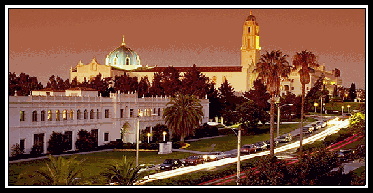
URBAN ECONOMICS
 |
| Spring 2003 |
 |
Economics 104 URBAN ECONOMICS |
|
|
|
| | HOME | SYLLABUS | CALENDAR | ASSIGNMENTS | ABOUT PROF. GIN | |
Study Guide III 1. How can establishing an urban service boundary limit population growth, and what are its effects? 2. How can controlling building permits limit population growth, and what are its effects? 3. What is nuisance zoning? 4. How can effluent fees be used to deal with pollution? 5. What is performance zoning, and how can it be used to deal with retail and residential nuisances? 6. What is fiscal zoning, and what is the effect of high-density housing, fringe land use, and commercial and industrial development? 7. What is the difference between exclusionary and inclusionary zoning? 8. In the city of San Diego’s "City of Villages" plan, what is the advantage of using infill redevelopment? 9. How does the city of San Diego’s regulation of the appearance of commercial and multifamily residential property relate to the idea of nuisance zoning? 10. What are the three criteria that are necessary for zoning to be constitutional? 11. What are the four rules that determine whether compensation is required? 12. What are the characteristics of local public goods? 13. How is the optimal provision of local public goods determined? 14. What would be the result if voting was used to determine the provision of local public goods? 15. What is the Tiebout model? 16. What are the implications of the Tiebout model in terms of homogeneity of communities, efficiency in the provision of local public services, and the income composition of communities? 17. What are implications of using the property tax to finance local public services? 18. What is the impact of sorting by peer groups in schools? 19. What are the reasons for racial segregation? 20. What is the relationship between racial composition of neighborhoods and the transition of those neighborhoods? 21. How does the government define the poverty level? 22. Why are there more female-headed households now, and why are they more likely to be poor? 23. How does household sorting lead to a concentration of poverty? 24. Why does poverty tend to be concentrated in central cities? 25. What is meant by spatial mismatch, and how does it contribute to poverty? 26. What are the consequences of sorting by income? 27. What are the consequences of racial segregation? 28. What policies could be used to reduce racial segregation? 29. What are the pros and cons of dispersing central city residents vs. developing the central city? 30. What are the consequences of labor market discrimination? 31. What are the two limits on the receipt of welfare that resulted from welfare reform? 32. What expenditures have been found by states to be necessary to make welfare reform successful? 33. What has been the impact of welfare reform in terms of welfare caseloads, employment, income, and poverty rates? 34. What questions have yet to be resolved in terms of welfare reform? 35. What is the impact of welfare reform on the market for low-skill labor? |